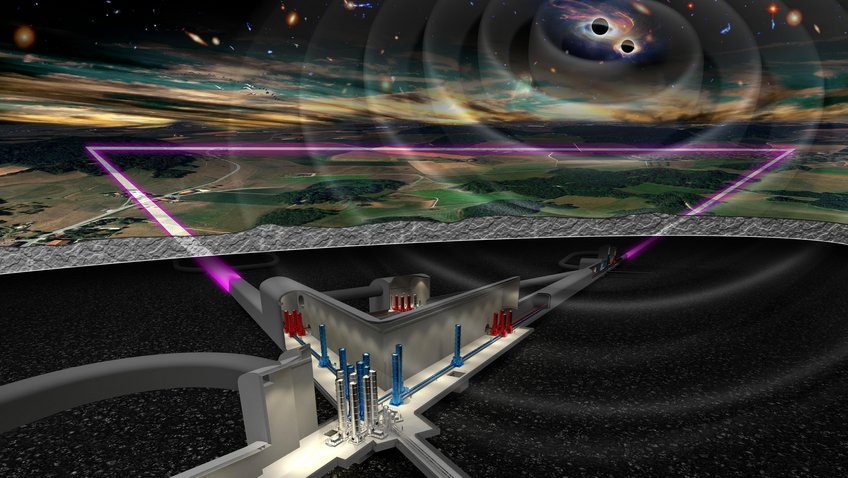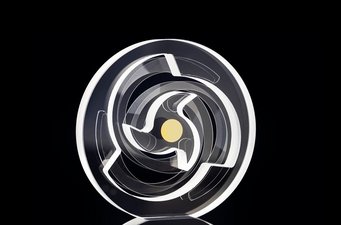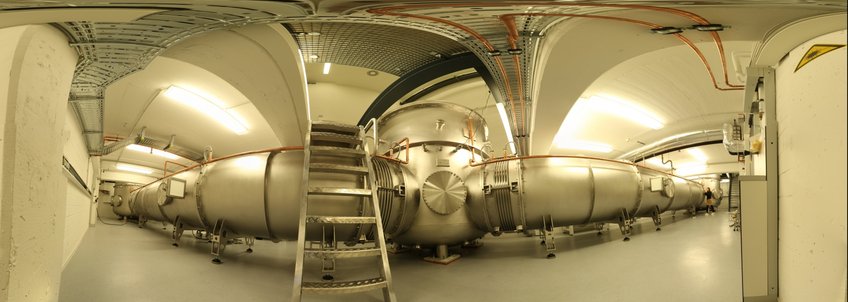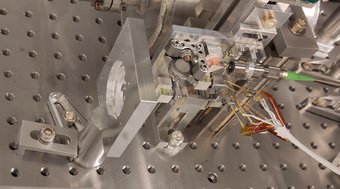Glass-and-laser sensor innovation for future gravitational-wave detectors
Max Planck Institute for Gravitational Physics and Fraunhofer Institute for Applied Optics and Precision Engineering IOF develop new compact inertial sensor with excellent performance.
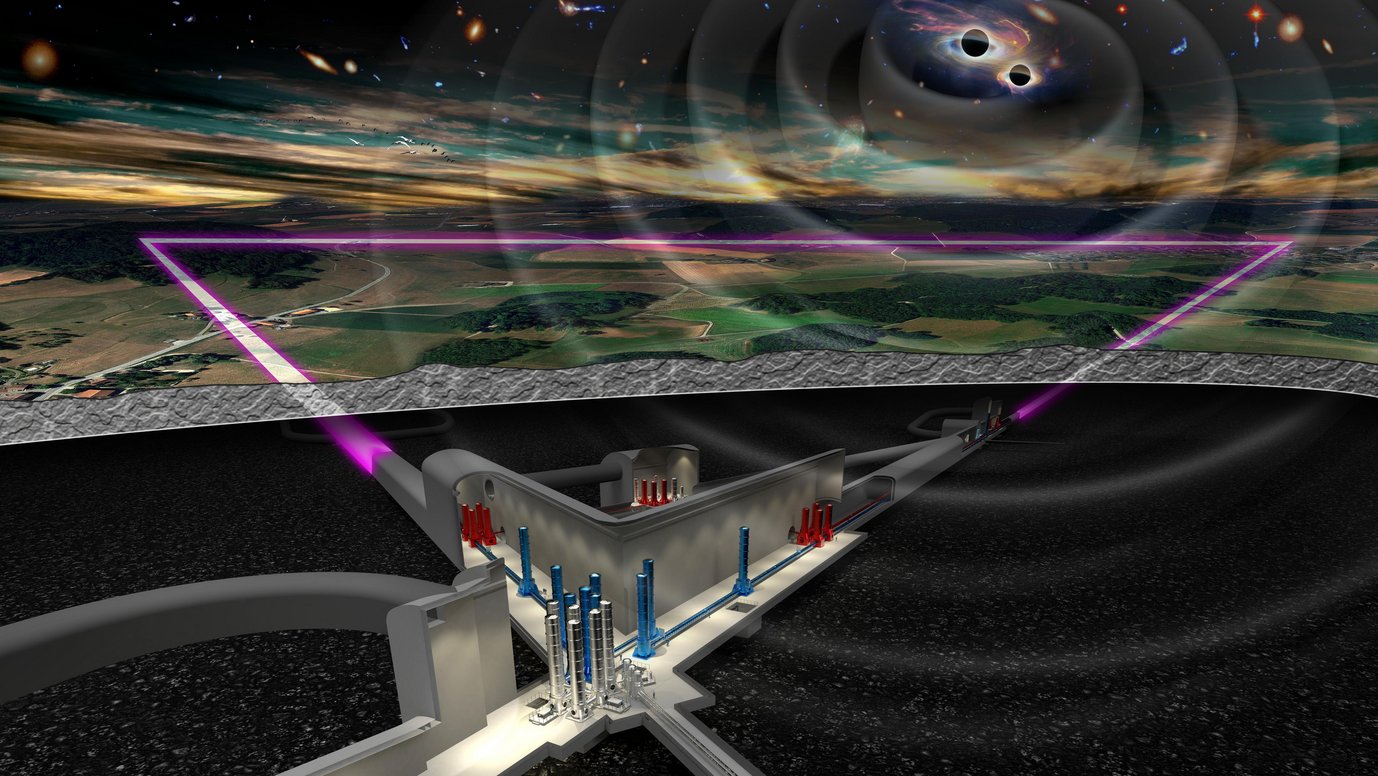
To the point:
- Sensing the seismic: High-precision experiments must be isolated from ground motion. They rely on inertial sensors, whose performance is heavily dependent on their mass. The state-of-the-art sensors used in gravitational-wave detectors use masses of several kilograms. Reducing the size and weight of the sensor without compromising performance requires careful design.
- Superb performance of novel design: Researchers in a Max Planck-Fraunhofer collaboration have developed a compact, gram-scale inertial sensor design and tested it in a gravitational-wave detector prototype facility. In a study now published in the journal Classical and Quantum Gravity they demonstrated that its performance is comparable to that of commercial kilogram-scale sensors currently in use in gravitational-wave detectors today.
- Excellent perspective for the future: Thanks to its small size, self-calibration, inherent vacuum compatibility, and “plug and play” functionality, the sensor is ideal for integration into a wide range of applications, including the complex seismic isolation systems of future gravitational-wave detectors such as the Einstein Telescope or Cosmic Explorer.
Removing ground motion
Current and future gravitational-wave detectors on Earth, such as the Einstein Telescope or Cosmic Explorer, must be superbly isolated from ground motion. Otherwise, seismic motion would completely mask the minute effects of gravitational waves. The first crucial step in removing slow ground motion is sensing it. This relies on inertial sensors that are comparable to, but much more sensitive than, those used in smartphones or game controllers.
“Our team has now shown that the novel inertial sensor we have developed works just as well as the commercial ones used in current gravitational-wave detectors. The new design’s biggest advantage is that it fits in my palm and weighs about as much as a grapefruit. Current state-of-the-art systems, on the other hand, are the size of a watermelon and can weigh several kilograms,” explains Jonathan Carter, a postdoctoral researcher at the Max Planck Institute for Gravitational Physics (Albert Einstein Institute, AEI) in Hannover, who is also the lead author of a new study published today in the journal Classical and Quantum Gravity.
A glass tuning fork sensed by a high-precision laser
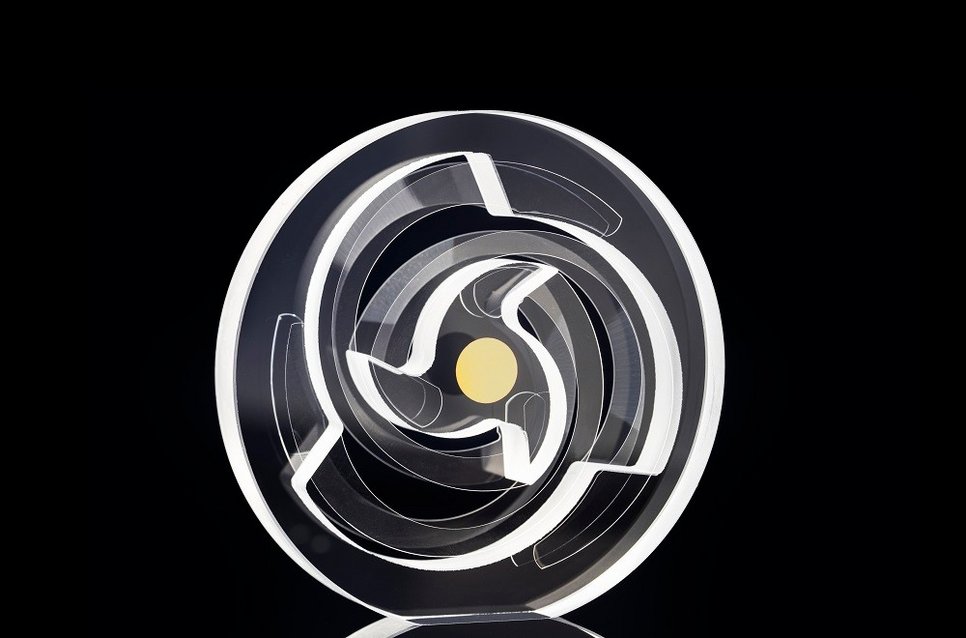
The new, compact sensor design combines a mechanical resonator, similar to a tuning fork, and a laser system that senses the resonator’s motion.
Researchers at the Fraunhofer Institute for Applied Optics and Precision Engineering IOF in Jena have developed a delicate, novel mechanical resonator made entirely of glass. “To meet the strict requirements for the sensor, that is, a small size, low mass, vacuum compatibility and a low ‘tuning fork’ frequency for our resonator, we chose using the material pure silica glass,” says Pascal Birckigt, the responsible sub-project manager at Fraunhofer IOF. “Our resonator consists of a 12-millimeter, 3-gram central glass mass connected by paper-thin blade springs made of the same glass to an outer glass frame. Instead of using glue, we applied direct bonding – thus realizing an interlayer-free, monolithic connection of the glass pieces.”
Researchers at the AEI have combined the silica resonator with a high-precision laser measurement system based on an earlier design from the university of Birmingham, built in the Hanover institute. Carter explains: “We have demonstrated our understanding of the laser system’s performance and confirmed its ability to precisely sense the motion of the glass resonator. This is quite a difficult task, given that its motion covers a very large scale, from nanometers to micrometers.”
Witness sensors and a quiet environment
Having developed a functioning, compact sensor system, the team proceeded to test its performance and compare it with that of current state-of-the-art inertial sensors. This required a quiet seismic environment and an array of other inertial sensors that could act as “witnesses” to identify the remaining common seismic noise. The AEI operates a 10-meter prototype facility, which is intended as an ultra-low noise interferometer with a layout closely resembling that of current gravitational wave detectors. It serves as a test bed for new gravitational-wave detector technology.
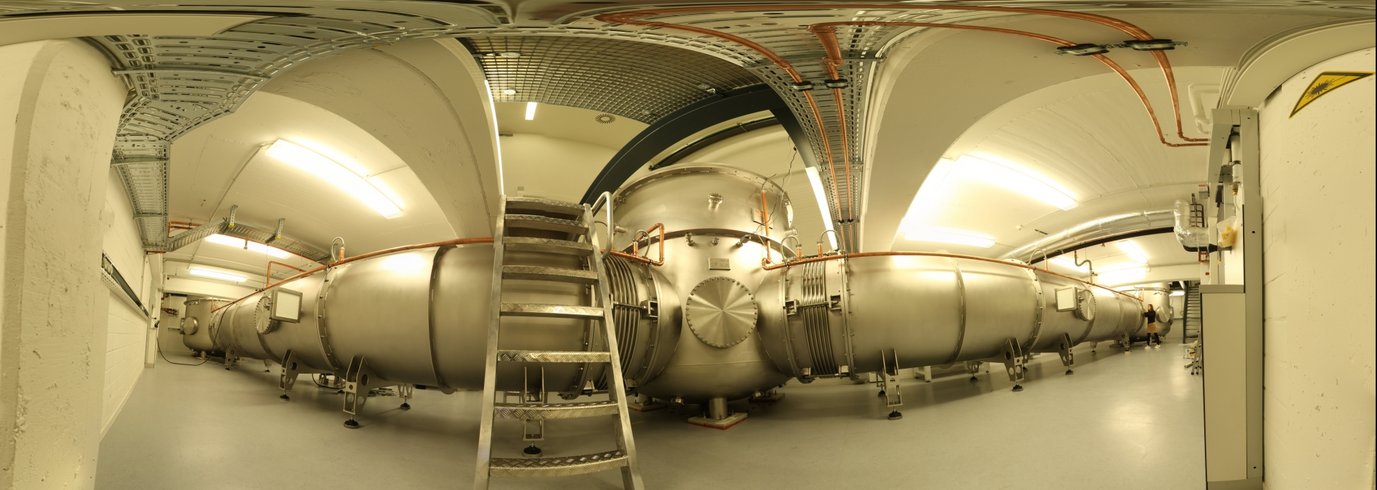
“The AEI’s 10-meter prototype facility contains seismically isolated experimental platforms within a large vacuum system,” explains David Wu, who leads the 10-meter prototype group at AEI. “It also has a large number of existing environmental ‘witness’ sensors. We combined their signals to independently infer the motion of our novel inertial sensor setup inside the 10-meter prototype. This is used to distinguish the seismically induced motion of the sensor from the underlying noise”
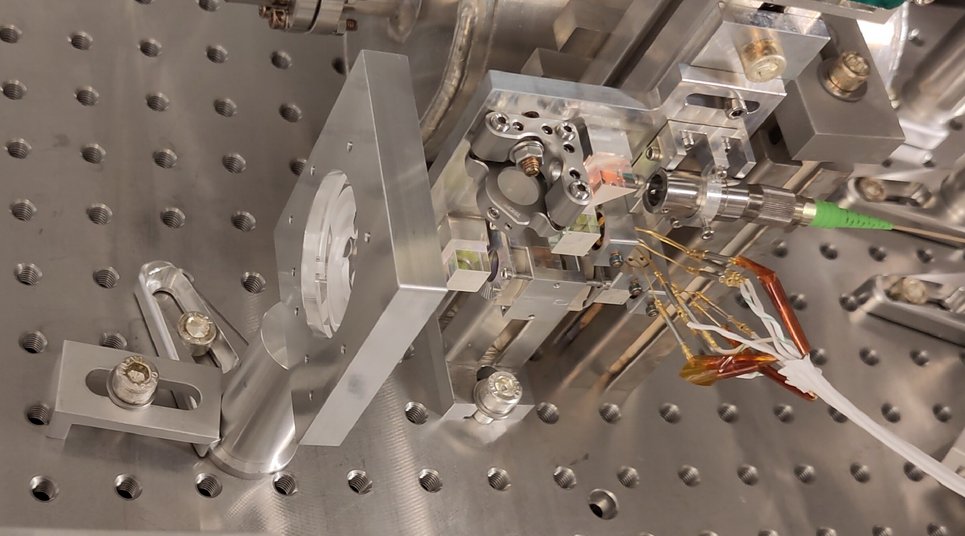
The research team assessed the performance of the newly developed, compact inertial sensor by comparing its measurements with the combined data of the witness sensors. The first prototype’s performance is already comparable to that of state-of-the-art sensors using kilogram-scale masses, while being only a fraction of the size.
Ready for the next steps
The new sensor system is vacuum compatible and can easily be calibrated. Using a well-established laser sensing system enables “plug and play” use with existing experimental infrastructure. Replacing silica with silicon as the resonator material also makes the system available for use at very low temperatures close to absolute zero. This would have applications in third-generation gravitational-wave detectors operating at these conditions.
“Our successful proof-of-principle experiment shows that we are now ready for the next step. The next generation of these glass sensors with even lower ‘tuning fork’ frequencies could be a crucial component in future gravitational-wave detectors such as the Einstein Telescope or Cosmic Explorer,” says Carter.
Background information
The Einstein Telescope
The Einstein Telescope (ET) is a design concept for a European third-generation gravitational-wave detector, which will be 10 times more sensitive and much larger than the existing instruments. While the latter currently observe a signal every few days, the third generation of detectors will be listening to the gravitational-wave sound of the Universe almost continuously. Detecting these waves more clearly, they will also resolve more details and reveal more information about the source it came from. At the moment, possible detector sites in the border area of Belgium, Germany, and the Netherlands as well as in Sardinia and in Lusatia are being evaluated. A decision about the site might be possible in early 2027.
Glass Technologies for the Einstein Telelscope
Researchers at the Max Planck Institute for Gravitational Physics (Albert Einstein Institute) in Hannover are working with colleagues at the Fraunhofer Institute for Applied Optics and Precision Engineering IOF in Jena to develop miniaturized opto-mechanics and new technologies for seismic isolation and laser stabilization for the Einstein Telescope, the planned third-generation gravitational-wave detector in Europe.
For more information about Fraunhofer IOF, please visit: www.iof.fraunhofer.de.
